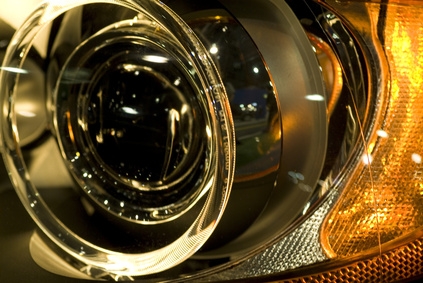
High-intensity-discharge (HID) xenon headlights have three major differences compared with halogen headlights: xenon and other noble gas headlamps employ ballast to regulate/maintain the electrical charge to the light bulb; a projector lens is used rather than a reflector; and good-quality xenon headlamps should last about 10 times longer than halogens.
The good news is that HID Xenon headlight assemblies can be installed in most any car, and the brighter light, better efficiency, and longer headlamp light beam can be more economical over time, especially if replacing the light bulbs only.
Buy a good HID kit. Complete conversion kits come with two ballasts (one for each headlamp), two bulbs, mounting hardware and wiring. They also come with a warranty that's good for up to one year.
Open the hood and remove both headlight assemblies. If enough room exists in the engine compartment to remove the bulbs, you do not have to remove the headlight housings.
Remove the existing headlight bulbs from the headlight housing. This is normally accomplished by a counterclockwise twist of the socket at the back of the light assembly to release the socket and bulb from the light housing.
The HID light might be wider than the halogen opening. Delicately drill or use a circular file to create a wider opening, generally 15mm.
Install the HID lights in the light assemblies. First remove the cover from the bulb, being careful not to touch the glass portion as oils in the hands can cause blotting on the lights. Use alcohol to remove any smudges if you do touch the bulb. Plug the wiring harness into the rubber base, then fit the back cap onto the assembly. When finished, close the headlight shield tightly by turning in the direction that tightens it.
Connect the wires of the HID bulbs to the output of the ballast. The connectors are usually color-coded, and good kits are mistake-proof, with the plugs going in only one way.
Connect the output from the battery or other power supply harness to the relay, and in turn connect the relay to the input of the ballast.
Secure the ballast(s) to any solid place in the engine bay using double-sided tape, mounting brackets, or zip ties. (Avoid high-temperatures areas in the engine bay.)
Test the lights' function. If they blink or light intermittently, turn off the power and check all connections.